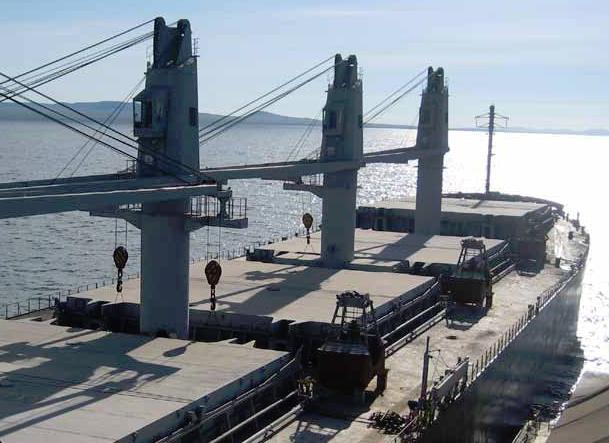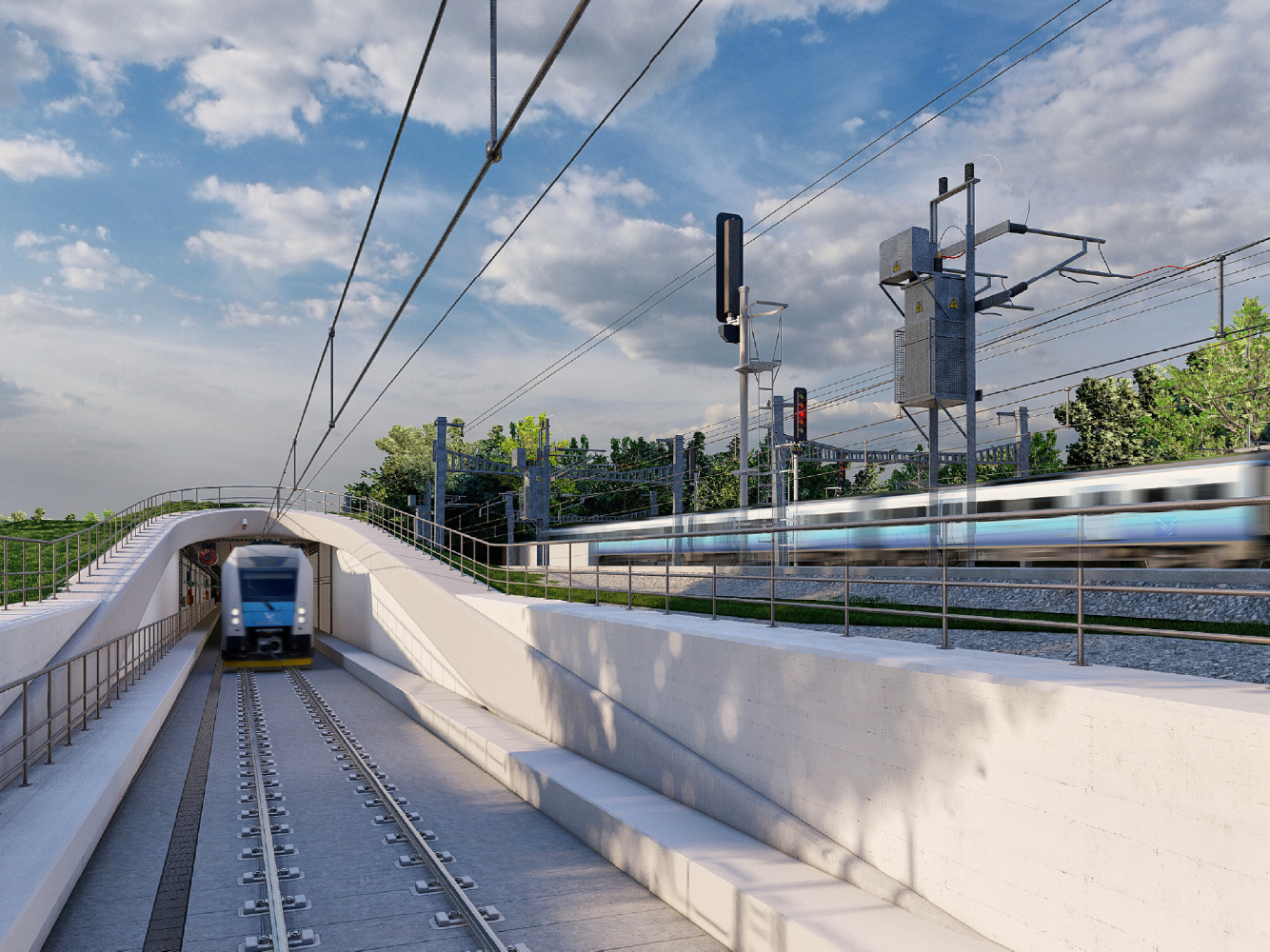
By financing the construction of the DeLong Mountain Transportation System in the icy Northwest, the Alaska Industrial Development and Export Authority made the development of the world’s second-largest zinc mine possible. Karsten Rodvik and Jim Hemsath talk to Gay Sutton about how the project has boosted the region’s economic development.
A nation’s transportation infrastructure can be thought of as its vascular system and backbone—not only transporting commodities and people in a timely way to the desired destination but also firmly supporting and holding together businesses and communities. But for the remote vastness of Northwest Alaska, where the majority of communities lie off-road and isolated for large parts of the year, the transport infrastructure is absolutely critical.
Well above the Arctic Circle in the area known as the Northwest Arctic Borough, the construction of the DeLong Mountain Transportation System (DMTS) for the proposed Red Dog Mine some 20 years ago enabled the development of the world’s second-largest zinc mine. The mine, in turn, has significantly improved the economic prosperity of the local area, and indeed of Alaska as a whole.
While the mine was jointly developed by Cominco (now Teck Alaska Inc.) and the NANA Regional Corporation, the native Inupiat people upon whose land it sits, the DMTS was financed and built by the Alaska Industrial Development and Export Authority (AIDEA). A statutory corporation of the State of Alaska, AIDEA’s mission is to promote, develop and advance economic growth and diversification in Alaska by providing various means of financing and investment. AIDEA’s vision is to actively partner with Alaskans as a dynamic resource in statewide economic development. The result has been the creation of many employment opportunities throughout the state.
Since AIDEA is a public corporation rather than a traditional state agency dependent on state funding, AIDEA is able to operate more like the private sector rather than the public. “We are not funded by the state,” explains external affairs executive Karsten Rodvik. “Our revenues come from financing large projects like Red Dog, from our highly successful loan programs with Alaska businesses, and from our investments. These revenues not only cover our operational expenditure; we also pay an annual dividend of up to 50 percent of our revolving fund net income to the State of Alaska general fund.”
The costs of the construction of DMTS and its subsequent expansion have largely been raised through the sale of bonds, an overall investment totaling approximately $267 million. “This is essentially a long-term, patient capital investment program of 40 to 50 years,” explains deputy director Jim Hemsath. The investment is repaid through a toll on the road and port use. “Therefore, this time frame for payback can shift depending on the amount of ore that is moved. This was one of the risks associated with the construction of the DMTS. We were working on the assumption that further deposits would be developed at Red Dog and that ore would continue to be transported via the road to the port.” This decision to invest in the long-term future of the mine appears to be a good one.
As exploitation of the original Red Dog pit nears completion, the development of the directly adjacent Aqqaluq deposit is ramping up, and the first load of ore has been shipped from the port. Over the past few years, AIDEA has been working closely with Teck through the various phases of feasibility study and permitting. “This year, for example, we have written a letter to the Environmental Protection Agency supporting Teck’s application for the expansion,” Hemsath says. And the expansion will have obvious benefits for AIDEA. “We believe the Aqqaluq deposit is likely to extend the life of the mine to 2031, and therefore revenues for the use of the road.”
Today, the DMTS consists of a combination of a 52-mile-long, 30-foot-wide all-weather industrial haul road and a shallow-water dock and storage facilities located on the Chukchi Sea about 12 miles south of the small community of Kivalina. At these latitudes ship movements are only possible for three months of the year when the sea is ice-free. Equipped with an offshore conveyor concentrate loading facility, the port therefore operates for a short period of intense activity between June and early September, when the entire annual output of the mine—some 1.2 million tonnes (metric tons) of ore—is shipped out.
Traffic on the road continues throughout the year, though, as ore concentrate is transported from the mine to the port and stored in two of the world’s largest ore concentrate storage buildings. The port is also an essential import route for the mine’s supply of fuel for the year, and this is shipped in at the beginning and end of the shipping season and stored at the port’s fuel storage and distribution system. For the delivery of essential fresh food supplies and staff arriving and departing for their six-week shift pattern, however, the mine relies on a purpose-built airstrip capable of handling Boeing 737s throughout the year, weather permitting.
The benefits of AIDEA’s investment in Red Dog have been enormous and amply fulfill the organization’s remit. “During financial year 2009, for example, more than 550 people were employed by Teck at the mine and port. Some 60 percent of those were NANA shareholders, and 20 percent were local Borough residents,” Rodvik says. “We’re talking about highly skilled, high-paying stable jobs, and they have given a tremendous economic boost to a very remote region of Alaska.”
The wider Alaskan economy has also benefited to the tune of more than $274 million in annual dividends from AIDEA since the dividend program’s inception, while a percentage of the dividends received by the NANA Corporation are also shared with other native Alaskan corporations, spreading the wealth.
Further expansion of the DMTS looks likely over the next two to five years. Teck is in the process of studying the feasibility of installing a water line parallel to the road for the disposal of treated water, while AIDEA is currently working closely with Zazu Metals Corporation, a mining company in the early stages of developing the Lik zinc deposit some 40 miles northwest of Red Dog. “If the development goes ahead,” Hemsath says, “we’ll construct another 50 miles of road to connect the new mine to the existing haul road. We will also need to construct a third ore concentrate storage facility and install extra materials-handling equipment.”
Looking to the future, AIDEA continues to look for suitable public-private partnerships with industry to develop the natural resources in Alaska. “We’re also looking for opportunities for production and manufacturing,” Hemsath says. “Alaska has a lot to offer, our location being a major one; we’re on the Arctic shipping route. As the ice patterns change, some of the heaviest shipping traffic is likely to come right by Alaska. We believe that as our world changes and the global market changes, Alaska can become a larger participant.” And undoubtedly AIDEA will play a significant role in financing and developing that change.













